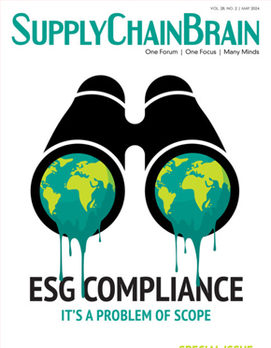
I’ve been listening to Bloomberg Radio lately for the play by play of the recent stock market volatility. Supply chain issues have been appropriately cited as a key contributor to corporate profit woes. As a result, I heard two different radio guests proclaim the death of “just in time” inventory planning and suggested “just in case” is the new way. I disagree with that assertion and have a different perspective. First, an explanation of each inventory approach.
Just in time inventory management optimizes the supply chain to receive materials as they are needed and not before. The goal is to meet demand with minimal inventory, reducing cost in the supply chain, minimizing working capital and maximizing profit.
Just in time has never meant zero queueing (inventory) in the supply chain. Each step or node in a supply chain has a different rate, reliability (uptime), and risk. Just in time requires that you understand those components at each node in the supply chain and use inventory queuing to create steady, just in time flow.
'Just in Case' of What?
Based on recent inventory shortages, the Bloomberg guest commentary argues for “just in case” planning where inventory is intentionally overstocked to deal with the possibility of supply chain dislocations. The flaw in this argument is exposed by a simple question: just in case of what?
There are situations where just in case logic makes sense, on the surface. Take for example the military stockpiling ammunition just in case a war breaks out. The military could need a lot of ammunition quickly, and a just in time supply chain would have to scale quickly. The risk of running out of ammunition is not an acceptable risk for the military. But isn’t this “just in case” example from the military really “just in time”? After all, their supply chain planning is all about big risks on a long time horizon.
Just in case comes with huge risk and cost. Particularly for a perishable supply chain. Avocados expire and the price goes to zero when they go to mush. How about computer chips? Surely they must have an infinite shelf life. How is that Commodore 64 working for you? In addition to obsolescence, there is risk and cost for storage and transportation independent of the goods themselves. Just in case can create a business liquidity crisis just as fast as just in time.
Risk Tolerance and the Cost of Failure
Excellent supply chain planning is about understanding the risk associated with a supply chain failure and the cost to mitigate that risk. Back to the military example, the supply chain investment (defense budget) is for a low-probability, high-cost event like war. But what about less existentially consequential domestic supply chains like lumber?
Does a lumber yard who services home-builders need to satisfy all home-builders’ needs all of the time under all circumstances? What if the plan is to take care of customers on same-day requests 99 out of 100 times, and 1 out of 100 times satisfy them tomorrow instead? Making that choice allows operators to estimate risk and cost of just in time vs just in case. Done right, the operator will see that 1 time out of 100 before it happens and decide which customer to delay serving until tomorrow. That’s how data-driven supply chains create value beyond working capital optimization.
Supply chain planning, regardless of the scenario, requires planners to use data, estimate risk and cost, and make risk-weighted decisions. The military must constantly track data (intelligence), estimate risk and cost, and make risk-weighted decisions that include scenarios like war in Europe during a pandemic. But for lumber, that same extremely rare scenario is extremely costly to plan for in a domestic supply chain. Any lumber yard planning for the 2020 covid shock would have been bankrupt from high operating costs long before the 2020 pandemic they had been planning for, just in case!
Is onshoring the answer for supply chains?
Onshoring to eliminate global risk must be the answer, right? How did that work for lumber these past two years? Most US homes are built with US and Canadian lumber. That supply chain essentially operates closer to a just in case model due to lack of data, market fragmentation and opacity, and poor supply chain planning, and it’s onshore. It was still rocked by the pandemic and market sentiments from the war.
International supply chains have different costs and risks, but onshoring is not a panacea for supply chain planning. Planners have to understand risk and cost — whether their supply chains are onshore or offshore.
Matt Meyers is CEO of Yesler.


.jpg?height=100&t=1715228265&width=150)



